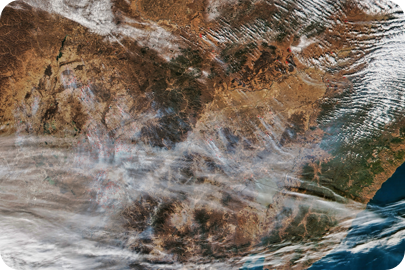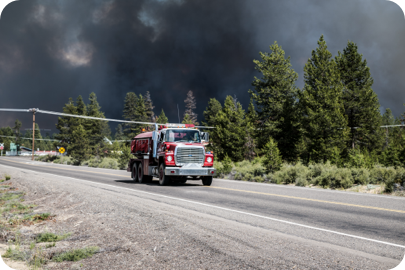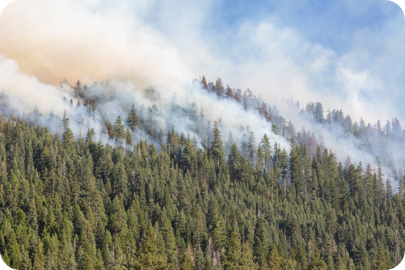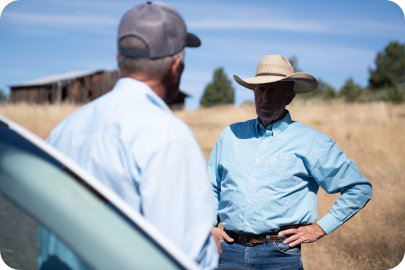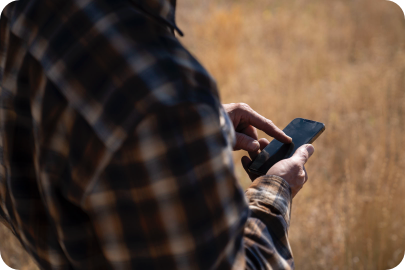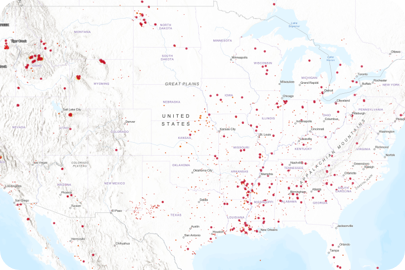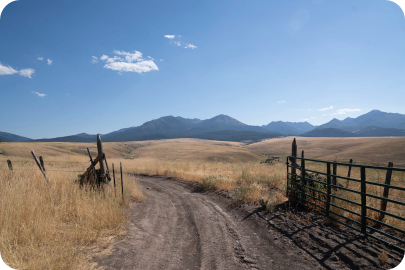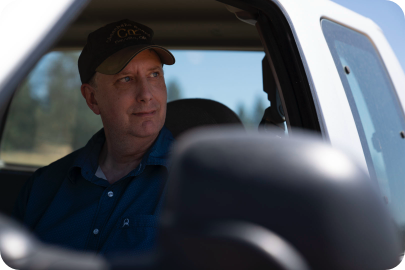
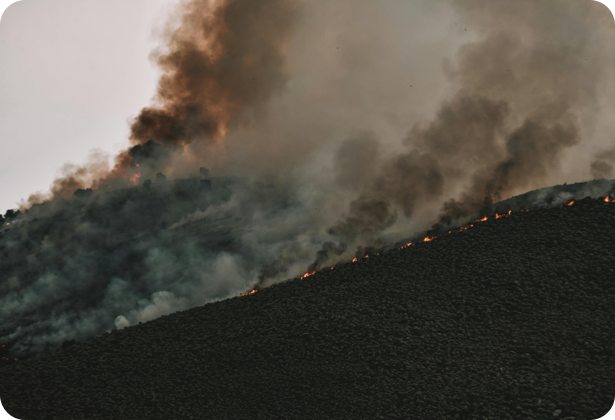
Grant Resources
Featured article
Understanding the impact of fine fuels
Find out why invasive annual grasses like cheatgrass, medusahead and ventenata can increase wildfire risk and how to protect your rangeland.
View full article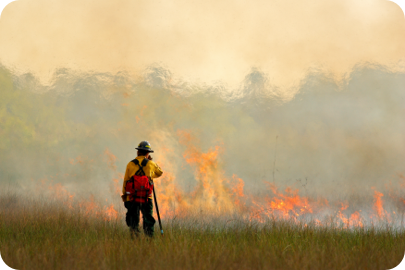
Wildfires
See wildfire forest action plans from the National Association of State Foresters:
View full article >Wildfire FAQs
What is a wildfire?
A wildland fire or wildfire is defined in the dictionary as “a sweeping and destructive conflagration especially in a wilderness or a rural area.”1 The U.S. Forest Service goes on to say, “Wildland fires are a force of nature that can be nearly as impossible to prevent, and as difficult to control, as hurricanes, tornadoes, and floods.”2 But with some new innovations and practices, we believe prevention is an admirable goal to strive toward.
Why does it seem like wildfires are becoming a bigger problem than in the past?
In the last few decades, the United States has seen longer fire seasons and more acres burned on average each year.2 Between 1980 and 2021, the U.S. had 20 wildfire events with damages totaling over $1 billion, and 16 of those 20 fires occurred from 2000-2021. While certain climate cycles shift every few decades, the shift in the late 1990s was likely combined with ongoing global climate change, drought and snowmelt, which may contribute to the warmer, drier conditions that fuel wildfires.3
Are all wildfires dangerous?
No. In fact, many wildfires can be beneficial. Naturally occurring, they are part of a healthy ecosystem by reducing grass, brush and trees to improve wildlife habitats. However, in the wrong place and time, they can be devastating and destroy natural resources, homes, communities and even lives.1
What is a “controlled” or “prescribed” burn?
Controlled and prescribed burns are planned in advance with consideration for the time, weather and environmental conditions. They follow a plan that details the size of the fire, where exactly it should occur and what the intended goals of the burn will be.
Usually, controlled burns are conducted to rid an area of dead leaves, brush and other fine fuel debris. They may also be used to reduce insect populations or destroy invasive vegetation species. Regular burning may return nutrients to the soil by accelerating decomposition of debris and provide more room for young trees and plants to grow.4 However, conducting safe prescribed fires can be very difficult to plan and expensive to execute.
Why are controlled or prescribed burns considered good but many wildfires are considered bad?
While controlled burns are planned and kept to specific areas, wildfires are unplanned and may quickly get out of hand. They burn extremely hot and may cause unrestricted damage, making it difficult for some species to recover. Lasting damages can cause irreparable harm to plants, animals, homes and ecosystems.
What is a “fire-adapted ecosystem”?
A fire-adapted ecosystem is one that has naturally evolved to withstand low-intensity or even moderate-intensity fires. For example, this could be a forest made up of trees with characteristics for it to withstand fire, such as thick bark and long trunks and where the leaves and needles that perform photosynthesis are high off the ground. For thousands of years, these ecosystems were able to naturally survive wildfires. However, fire suppression and a previous lack of tools to manage the landscape allowed fine fuel loads to accumulate to dangerous levels, resulting in these ecosystems being much more susceptible to wildfires.
How do wildfires impact rangelands?
Rangeland wildfires destroy a land’s native, perennial forage needed for cattle grazing. They can also damage ranching infrastructure like fencing and mechanical equipment, which can be expensive and time-intensive to repair. Recurring or intense wildfires can create a high-risk environment for ranch hands and ranchers. Dangers can include injuries, respiratory and cardiovascular illness from smoke inhalation, and even death.
How do wildfires impact communities?
Wildfires can damage and destroy homes, buildings and other infrastructure as well as injure and kill people. In 2021, 3,800 civilian fire deaths occurred, and 14,700 people reported fire injuries. Property damage was estimated to be at $15.9 billion.5 A 2021 report placed 4.5 million U.S. homes as “high” or “extreme risk” of wildfires.6
How do wildfires impact ecosystems?
Wildfires can be devastating to ecosystems, causing long-term and even permanent damage to native perennial species. Soil erosion, air pollution and polluted water runoff are all possible negative effects of a wildfire on the local ecosystem. Likewise, important animal populations can be injured or killed in fires. For those that survive, many will often migrate away from the affected areas. Together, this could result in the permanent elimination of critical wildlife habitats for various species such as mule deer, sage-grouse, elk, nesting birds and more.
What should I do if a wildfire has occurred on my land?
If you are looking into wildfire recovery, check with your local and state government for resources and recovery assistance. Consider consulting a resilience and resistance (R&R) map to help approximate the recovery potential after the disturbance based on broad soil characteristics and climate.7 And be sure to look and apply for grants designed to help recovery efforts.
If you’re looking for more preventative measures to stand up against future wildfires, be sure to explore this site fully and learn more about herbicide treatments like Rejuvra® herbicide.
